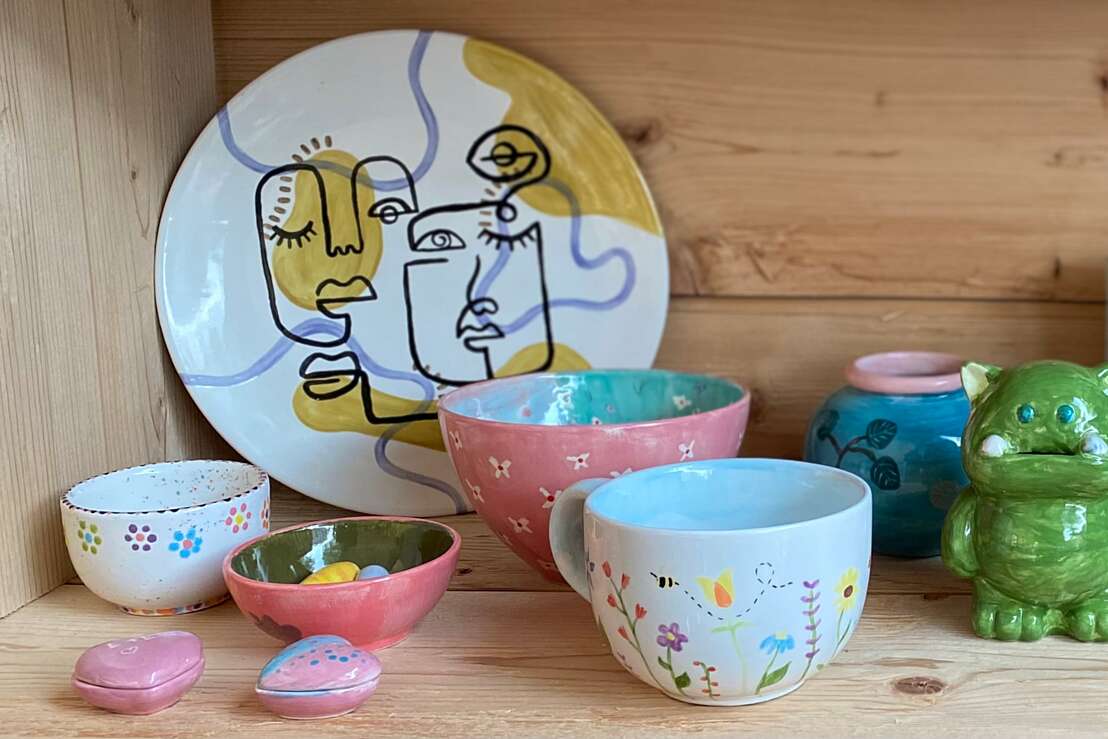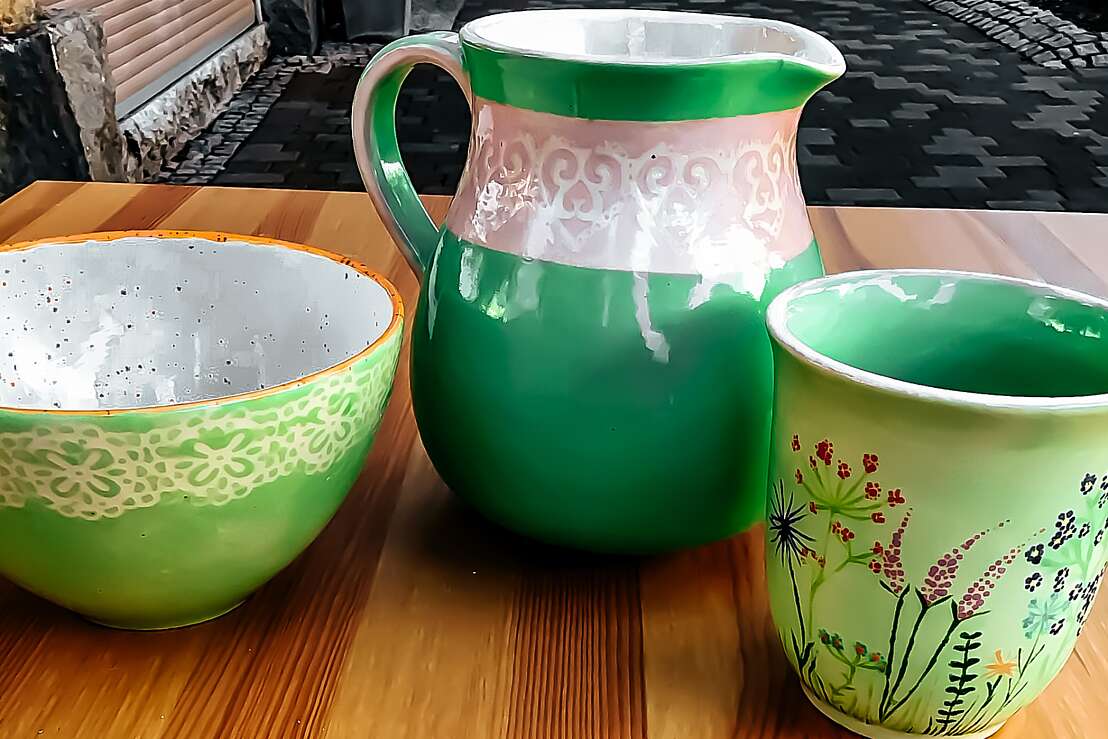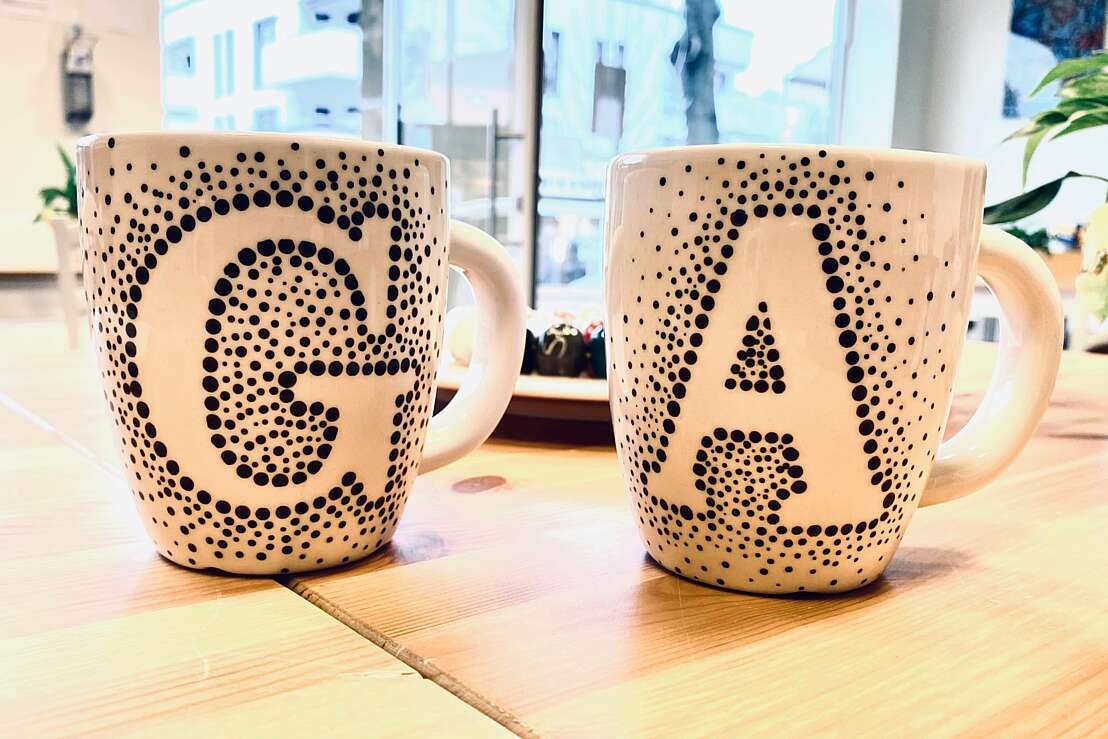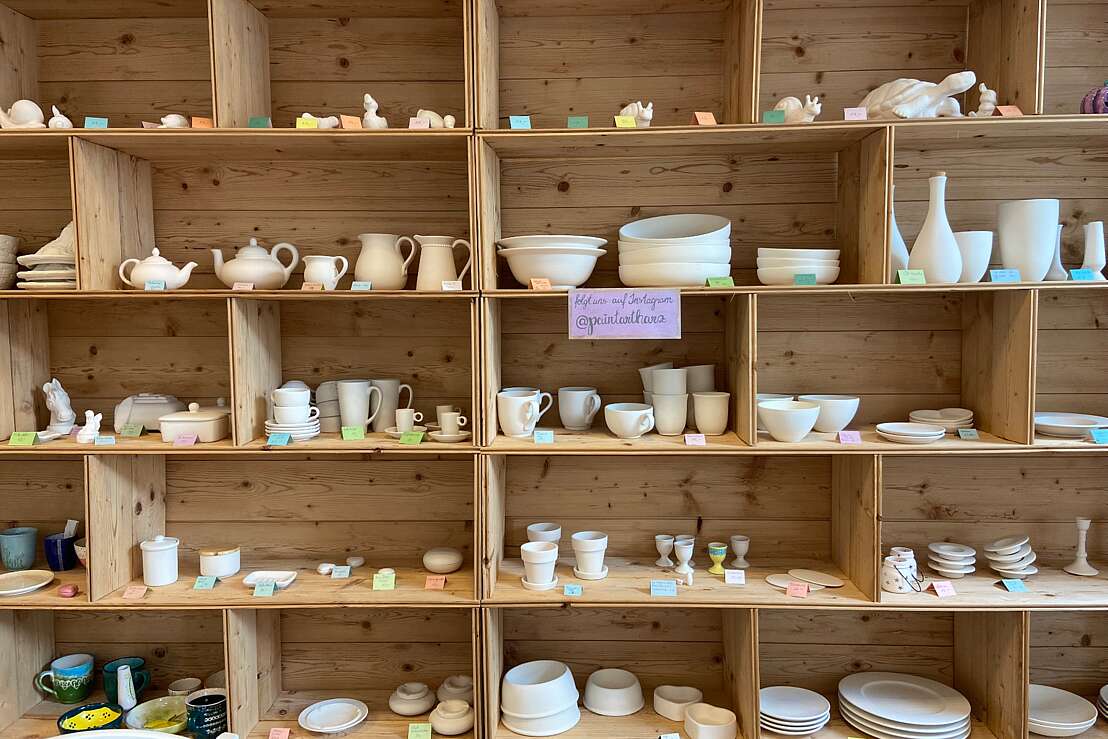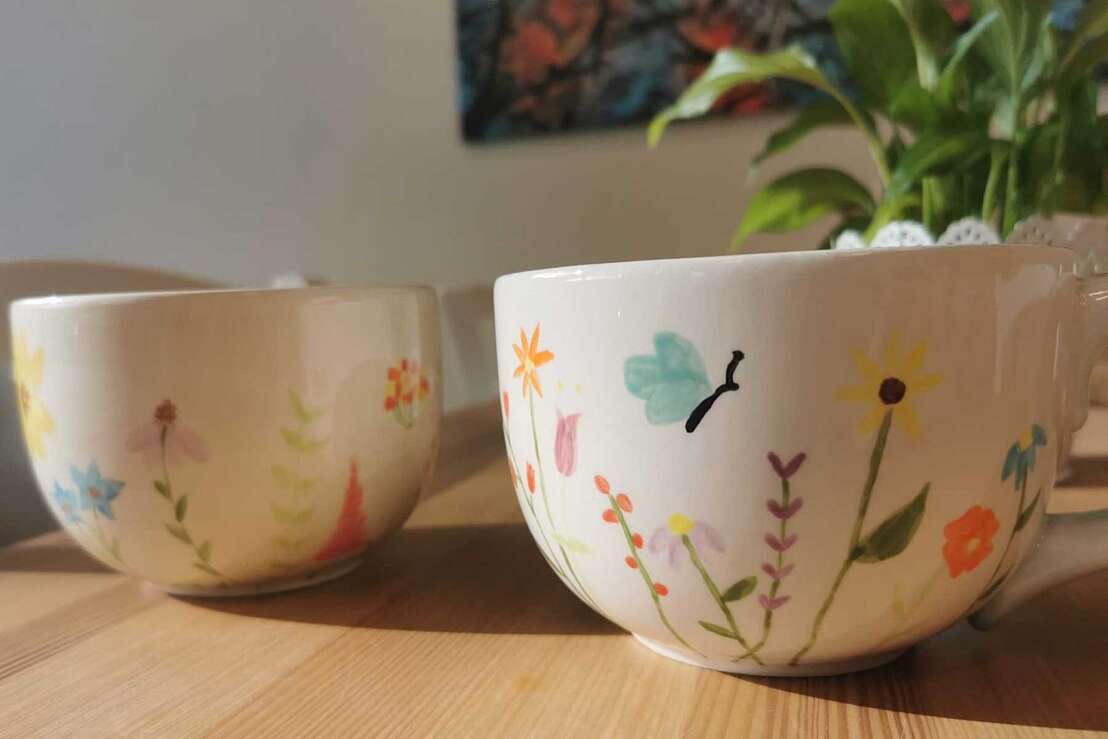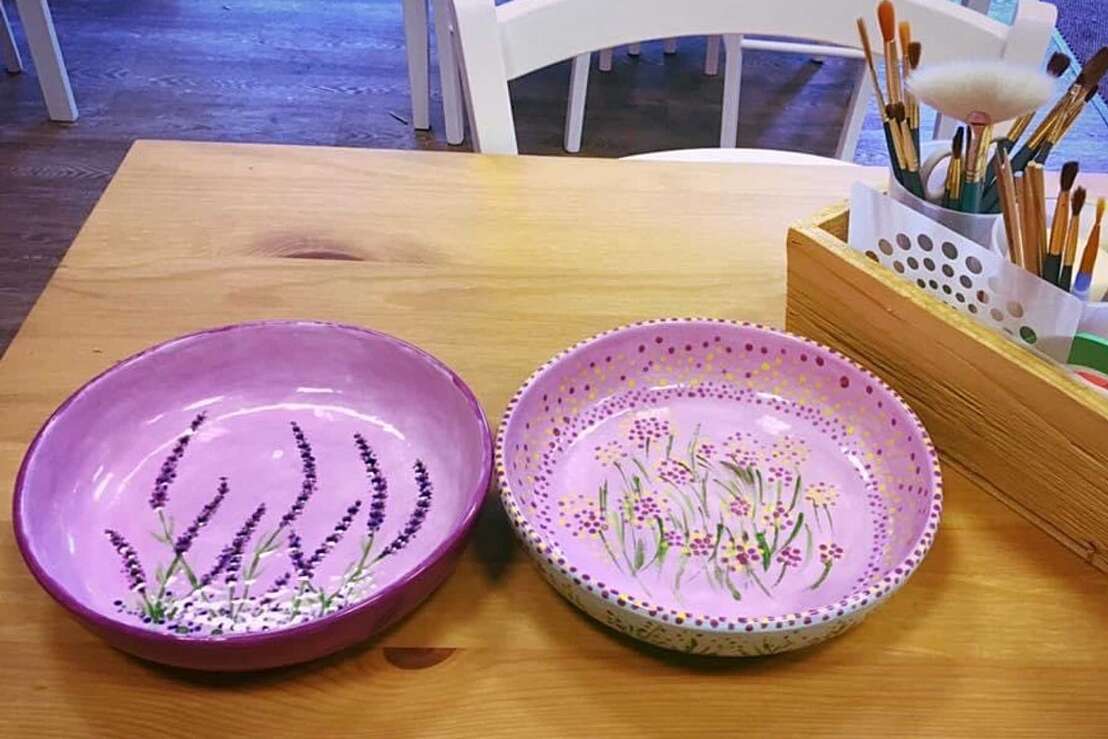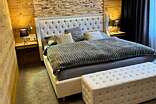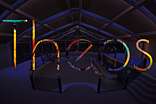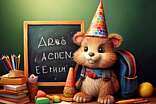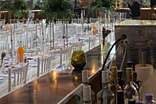Harzspots Vacation planner
| Name | Date |
|---|
Paint Art - Keramikmalerei


Ceramic painting in the Harz Mountains
IndoorHarzspots Vacation planner
| Name | Date |
|---|
THE PAINT ART CERAMIC PAINTING
Come and join us!
With us, being an artist is not difficult at all, because in fact there is an artist in everyone.
Since 14 February 2020, the doors of the Wolfstein Gallery have also been open to creative hands. In our ceramic painting workshop, young and old meet to give free rein to their imagination. Of course, we are happy to offer advice and support to all painting beginners and supervise the individual painting process - from the idea to the sketch to the finished ceramic artwork.
We are also happy to plan events such as birthdays, hen parties or a creative get-together with friends, family or colleagues. Kitas and school classes (up to 10 children) are also welcome. Self-painted ceramics are doubly enjoyable for the person who paints them and gives them as a gift and, of course, for the recipient, whether for Christmas, a birthday, a christening, a wedding or just because.
For those who, despite everything, prefer to leave the painting to others or paint at home, we also have "to go" bags (containing selected ceramics and three colours per ceramic) and vouchers on offer. We will also be happy to send the fired pieces to all visitors to Bad Harzburg for postage.
We look forward to meeting you!
Your Paint Art Team
TECHNIQUES
How it works
On site, you choose a ceramic and your colours. Then sketch your design on the ceramic with a pencil (or see techniques). Don't worry, the pencil will burn off during the firing process and will not be visible afterwards. We glaze your masterpiece and fire it at 1050 degrees for about 28 hours in our kiln. After that it is dishwasher safe. You can collect the finished piece from us in 3-5 days.
Techniques used
Here you will find everything about the possibilities to create your individual work of art. Important: Wash your hands before painting. Do not get any grease on the pottery, otherwise the paint cannot be absorbed and will stain during firing. All areas that are not painted remain white and are only sealed by the transparent glaze. It is therefore always advisable to apply a light priming colour. The setting edges do not need to be painted, as we wipe them off before firing to prevent them from burning onto the kiln plate.
Sketching with a pencil
Before you start to paint, you can easily sketch on the pottery with a pencil and also erase motifs that I don't like. It is very important that you only lightly touch the pencil to the ceramic. Too much pressure has the same effect as grease on the ceramic - the colour and glaze do not stick and it also leaves grooves in the relatively "soft" ceramic. The pencil marks burn during the firing process.
Tracing
The tracing paper has one side with a transferring coating - this belongs downwards during the tracing process. It is best to try it out briefly on the ceramic to find out which side is the right one.
To do this, place the paper on the ceramic and draw a line with a biro - if the line transfers, the paper is the right way round. Now place the paper on the desired design and draw a line with a biro.
Then place the paper (without turning it over) on the desired area of the ceramic and trace the corresponding biros strokes with a little pressure so that the motif is transferred through the coating of the tracing paper. Done!
Dabbing with Mandala Tool
Simple but effective and beautiful is the dabbing technique. Here you can work with toothpicks, shish kebab skewers or mandala wands. A single application is enough.
Scrape out with a shish kebab, toothpick and stencil:
First, apply paint to the desired intensity. The thicker the layer of paint, the more difficult it is to draw extra-fine lines because you have to work your way through the entire layer of paint. To scrape, then take a shish kebab or a toothpick and scrape until you have exposed the white of the ceramic.
Stamp
Stamping is done "the other way round", so to speak. You spread "a little" paint with a sponge and then press on the paint with the stamp, which comes off at this point. The darker the colour, the greater the effect.
Stencils
This technique requires extreme caution and very precise work. Stencils can only be used on a flat, uncurved ceramic, as the stencil must lie flat to prevent the paint from running underneath. The best way is to use a sponge and then carefully dab the stencil with it. Of course, you can also use the stencil to scratch out the paint (see scratching technique).
Masking with border/tape
Masking is the method of choice if certain parts of the ceramic are to remain white. To do this, press the tape or the selected border well onto the ceramic so that the paint does not run underneath and paint. Here you can also use a sponge to prevent the paint from running. Then allow to dry briefly and remove the tape/border. Tape and borders adhere best to ceramics that have not yet been painted, without paint underneath.
Bubble technique
A real fun for young and old. Paint, water and washing-up liquid are mixed in a cup in a certain ratio. Then blow into the mixture with a drinking straw (be careful not to drink by mistake! ☺) to create coloured soap bubbles. You then push them onto the ceramics and great shapes are created. This can be done in one colour, but also in many colours.
Screen printing
In this technique, the paint is mixed with a powder to make a viscous paste. The silkscreen template is placed on the ceramic and the paste is carefully spread over the mesh of the silkscreen template. Easy as pie, but very effective.
We look forward to seeing you. It will be great fun!
Ilsenburger Str. 111
38667 Bad Harzburg
| E-Mail: | info@wolfstein-bad-harzburg.de |
| Telefon : | +491777770272 |
| Languages : |
| Saturday | 12:00 - 19:00 |
 Rating
Rating Rezensionen
Rezensionen